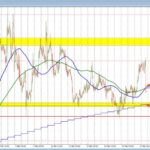
Navigating the Shift: Key Factors Influencing the US Dollar (USD) This April
Tháng 4 1, 2025Navigating Trade Turbulence: Trump’s New Tariff Strategy and Its Global Impact
Tháng 4 1, 2025Recent Developments in Canada-U.S. Trade Relations
In recent months, Canada and the United States have found themselves embroiled in a significant trade dispute, marked by escalating tensions and reciprocal tariffs. The roots of this conflict trace back to early March 2025 when the U.S. government imposed substantial tariffs on a range of Canadian goods. This article delves into the specifics of these developments and examines their broader implications for both economies. For deeper insights into Canada-U.S. trade relations, you can refer to this blog.
Background and Recent Tariffs
In a series of actions taken in March 2025, the U.S. administration unveiled tariffs of 25% on various Canadian goods, alongside a 10% levy on energy exports. The justification for these tariffs was grounded in national security concerns, as well as issues related to drug trafficking—a controversial rationale that has sparked debates concerning its legitimacy and fairness. On March 12, following the initial imposition, the U.S. ramped up tensions further by applying a uniform 25% tariff on Canadian steel and aluminum products.
In response to these aggressive trade measures, Canada swiftly retaliated. Effective March 4, 2025, the Canadian government implemented tariffs on approximately $30 billion worth of U.S. imports, aimed specifically at balancing the scales of trade and protecting Canadian interests. Additional counter-tariffs were imposed on March 13 on U.S. steel and aluminum, along with other selected products, signaling Canada’s determination to confront what it perceives as unjust trading practices.
Canada’s Response and Economic Implications
Voicing the Canadian government’s position, Mark Carney—a key figure in Canadian economic policy—has publicly endorsed a robust retaliatory stance against U.S. tariffs. Carney’s remarks reflect a broader national strategy geared towards shielding Canada’s trade interests. He emphasized that the resilience of the Canadian economy depends on its ability to respond effectively to such challenges.
The repercussions of this trade conflict extend far beyond the immediate imposition of tariffs. Economists predict that the resulting tariffs are likely to inflate costs for consumers and businesses alike, thereby weakening the competitive edge of both nations on the global stage. This situation poses a risk to the interconnected economic fabric of North America, where trade relationships are crucial for sustained growth and mutual prosperity. As explored in a related analysis, the current forex market trends between the U.S. Dollar and Canadian Dollar may indicate further implications of trade relations and tariffs on currency fluctuations (more details here).
In light of these challenges, Canadian businesses are increasingly encouraged to concentrate on domestic markets as a strategic response to the tariffs. This pivot aims not only to mitigate the impact of rising import costs but also to reinforce local economic activity and innovation.
While the current tensions present immediate challenges, they also compel both nations to reassess their trade policies and the underlying assumptions about mutual benefit. Canada continues to explore a range of options—both tariff and non-tariff measures—to navigate these intricate trade dynamics with the U.S. This ongoing saga is a pivotal chapter in U.S.-Canada relations, underscoring the delicate balance of interdependence and competition that characterizes North American trade. For a broader context on the global trade dynamics, including the impact of U.S. tariffs on Canada, consider reading this blog.
As developments unfold, stakeholders across various sectors remain poised to adapt their strategies, emphasizing the need for dialogue and policy adjustments to foster a more stable and equitable trading environment.
